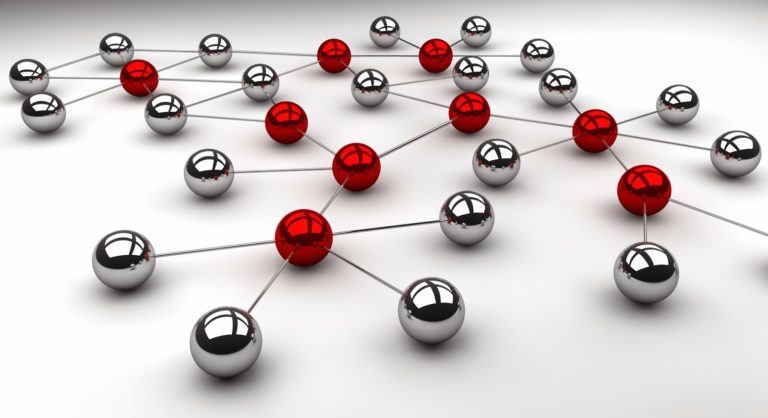Influence Effectively
 More than 60 years of research and experiment in the realm of influence have proven that human behavior majority of the time is highly predictable. There are indeed several ways to increase one’s influence quotient; I am going to share with what the science had found out about influence and how we can leverage on it positively, especially in an ever-changing dynamic in our workplace, where influence is an everyday affair.
More than 60 years of research and experiment in the realm of influence have proven that human behavior majority of the time is highly predictable. There are indeed several ways to increase one’s influence quotient; I am going to share with what the science had found out about influence and how we can leverage on it positively, especially in an ever-changing dynamic in our workplace, where influence is an everyday affair.
If you are a leader or manager, you cannot lead without influence, and we cannot not communicate without influence in the workplace. In my book titled, “The Power Science of Influence – Proven Strategies at Work, Sales, Team”, I shared 25 scientific behavioral strategies out of which, I am going to share with you 3 of them today.
Behavioral Strategy 1:
Give People Less Choice
Scientifically it had been proven that the less choice you give to a person, the more likely they are to make a sooner decision. The more choice you offer, you are directly the culprit in increasing their procrastination score.
An experiment that took place with a fund management house that offers funds for people buying into a pension plan realize that, for every 10 different funds offer for comparison, the sign-up rate drop by every 2 percent. The more choices on the plate, the more people are not going to make up their mind. They are directly increasing their procrastination score.
This strategy seems too simple? Not really. We as human are programmed to naturally love choices. In fact the more the merrier. We are constantly putting ourselves in a dilemma because end of the day, we ended up with more than we ask for, and when it is time to make a decision, we ended up with an analysis till paralysis syndrome.
Just pause and reflect for a little while, when was the last time you were in a meeting with many ways to execute a plan, and the meeting dragged on for hours when it could be done in 30 minutes? How do we make 30 decisions in 30 minutes? That is, to give people less choice and be specific with what you want them to do.
Behavioral Strategy 2:
Give People Less Reason
An experiment was done with two groups of people where they are tasked to decide whether to buy Brand A Car. The first group was asked: “Give me one strong reason to buy Brand A.” Majority of the people in the first group decided that Brand A was the best choice to buy.
However when the second group was asked: “Give me ten strong reasons to buy Brand A.” Majority decided that they wouldn’t be buying the car.
Interestingly, with the same car, we have two different responses. The mystery lies in the provision of one strong reason versus ten. Logically, we think that by having more reasons to act, we would facilitate a greater buy-in. In fact, the reverse is true and this effect might potentially back fire on us.
What then could be the underlying psychology? People find it hard to generate ten reasons to buy, and the aftermath effect? They unconsciously associate the difficulty of generating the reasons to the difficulty of making the decision to buy.
Linking this up to the first strategy of less choice, you should give people less choice and one strong reason to act. Too many choices and reasons mean too much time will be spent on the too much stuff. The saying goes, “major in the major thing”.
Before any meeting or conversation where you need to convince some one to say “yes”. Go over your notes and get as specific as possible. Plan exactly what you want the person to do. Give them less choice to choose and substantiate your preferred one with one strong reason, giving the push to act. Influence, is never an accident, it is by intention.
Behavioral Strategy 3:
Have Lunch.
Yes, I am not joking! Go and have lunch with people whom you intend to influence. Scientific evidence had proven that when we are having a great lunch, we would associate the positive feeling triggered by the food, lighting up the pleasure centre in our brain, and associating the positive feeling to your message delivered over the course of the meal.
If you have ever encountered a deadlock in meeting over certain disagreement, intentionally call for a tea-beak and adjourn the meeting to a café nearby. The only catch; start to persuade casually on the disagreement earlier, sharing your view. But, only when they are eating. It does not work if they are not eating anything!
In summary, you will increase your influence and persuasion score if you can narrow down and be specific with the choice for people, giving them less choice, and supporting the preferred one with a strong reason. If you have to, bring them out to lunch. The bill is on you of course!
Article by Mr Joseph Wong, Founding Director and Behavioral Transformation Coach of TrainingGearAsia Pte Ltd. He is the author of “The Power Science of Influence”, and an expert in harnessing the science of influence to transform behavior at work, sales, team and leadership. He is the author of “The Power Science of Influence”. For more information, visit www.traininggearasia.com or email influence@traininggearasia.com






